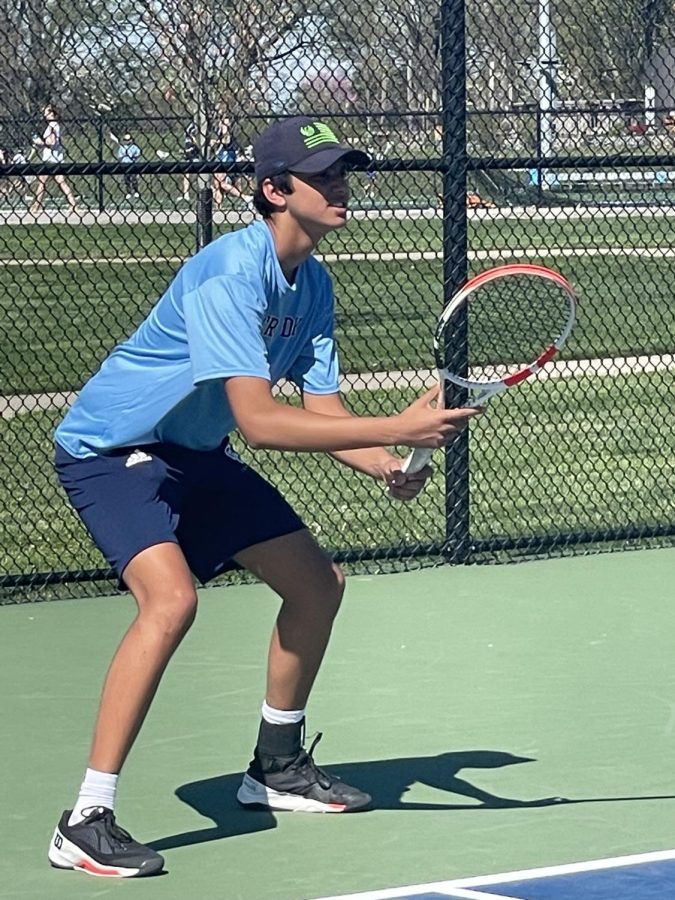By Jules Cantor, ’11, Sports Editor
CCDS is unique in that physical education requirements can be fulfilled by playing an interscholastic sport or by taking physical education classes. Each season an athlete participates in is worth one-eighth of a student’s required credit, and each physical education class is worth one-half credit. However, if you go to any high school football banquet and listen to any coach talking about any player, the speech will inevitably end with the following statement: “And if he works hard in the weight room, he could wind up being a real good football player for us.” With this motivation to be “a real good football player,” football players like those at CCDS are compelled to spend countless hours in the weight room doing bench presses, power cleans, leg presses, and squats during their off-seasons. This creates a dilemma: should they get that sports credit, or should they lift? My goal in this editorial is to explain why I think this dilemma is both unfair and unnecessary. In short, I believe that students who pledge an hour of their time to increase their strength, speed, and stamina at least three times a week should be rewarded with a sports credit.
As explained above, participating in a sport is part of the physical education curriculum at CCDS. The purposes of any physical education class are to promote physical activity and to provide a sound understanding of the functions of major muscle and organ groups. It would be impossible to argue that weightlifting does not teach both concepts thoroughly. After two-plus years of weightlifting in the CCDS program, I truly understand which muscles are important for me to strengthen in order to succeed in my athletic endeavors and obviously am engaging in strenuous physical activity.
Weightlifting would also allow student athletes to improve athletic performance. If a student athlete declares, “I want to be a football player,” he would be much better served by playing football in the fall and lifting all winter and spring than by playing football in the fall, lifting all winter, and then playing baseball in the spring. Increasing upper and lower body strength by spending time in the weight room would most certainly be more beneficial to the aspiring football player than taking ground balls and hitting in batting practice.
Students who want to focus on a sport they’d like to play at the collegiate level would greatly benefit from being given a sports credit in exchange for their weightlifting commitment. Take the case of junior Alexandra McInturf, a very skilled soccer player. For the past two seasons, Alexandra has been a key component of the girls soccer team in the fall. However, because she wants to compete in college, when the high school season ends, Alexandra’s does not. Alexandra plays select soccer well into the winter and spring, which demands a serious time commitment in each of these seasons. During her freshman year, Alexandra ran track in the spring, but she switched to lacrosse during her sophomore year. She also follows a rigorous weekly program with a trainer at Cincinnati Premier Training on Montgomery Road. It is simply unfair for someone as committed to a sport as Alexandra is to have to juggle academics, a select sport, and an additional athletic activity that he or she might not have any interest in and could possibly be injured playing. If such students were given a sports credit for weightlifting, they would be able to enhance their skills in the sport they love and be relieved of a the burden of a major time commitment.
While I understand that denying weightlifters sports credits increases participation, I can’t help but wonder if quality isn’t better than quantity. What I mean is, wouldn’t you rather have 11 athletes who have trained all year for baseball season, all of whom are primed to go out and win state championships, than 22 athletes, with 12 of them just there to get a credit and spit a few sunflower seeds while they’re at it?
CCDS has a tradition of excellence in athletics. If the school wants to maintain this tradition, I believe it is crucial to give sports credits for weightlifting. During their respective seasons, athletes will reflect upon their training in the weight room, remember how much work they put into their one season, and be inspired to do their best. If they are sitting on the bench spitting sunflower seeds in a sport they don’t care about, it is honestly a waste of their time and talent.
Many will argue that this problem can be avoided more simply: take PE. At a school as academically demanding as CCDS, this is almost impossible. With a rotating schedule and limited participation, fitting in PE is quite a daunting task. Also, as stressful as the workload at CCDS is, a free bell here and there is absolutely necessary to keep a student going. The other option is summer PE. While summer PE is a popular solution to the problem of getting sports credits, there are two problems with it. Already paying thousands of dollars in tuition, some parents will be unable to afford an added expense. Also, let’s be honest: what kid wants to wake up early and go to school during summer vacation?
This problem directly affects me because I am a participant in what sophomore Russell Patterson calls “the endless season.” Putting all the “63 in ’09” fanfare aside, my life would certainly be easier if I was given credit for my time spent in our humble gym next to the gymnastics area, making it unnecessary for me to compete in football and allowing me to focus on baseball, my main sport. That being said, football is a great way to stay in shape and teaches life lessons that cannot be learned anywhere else. However, as a baseball player hoping to compete at the collegiate level, I put my baseball career at risk anytime I step onto the football field. If I got credit for my time spent in the weight room, my risk of injury would decrease, but my chances of success would increase.
Image courtesty of doggedblog.com.






